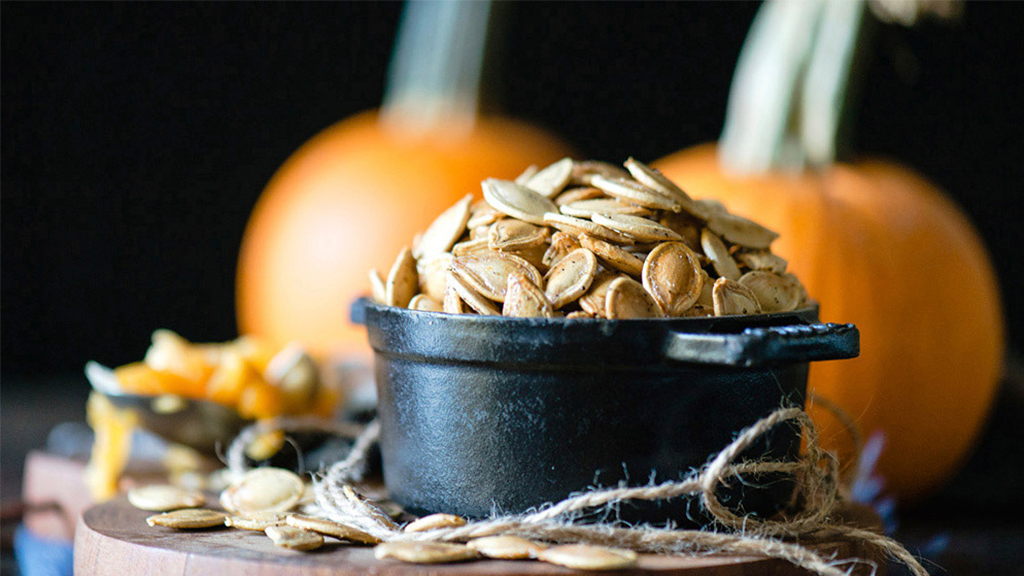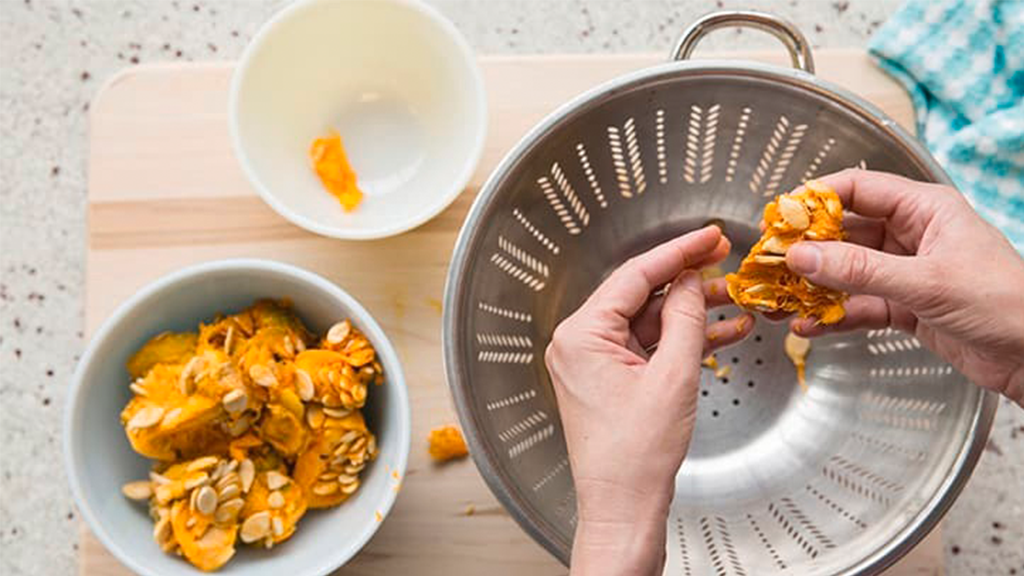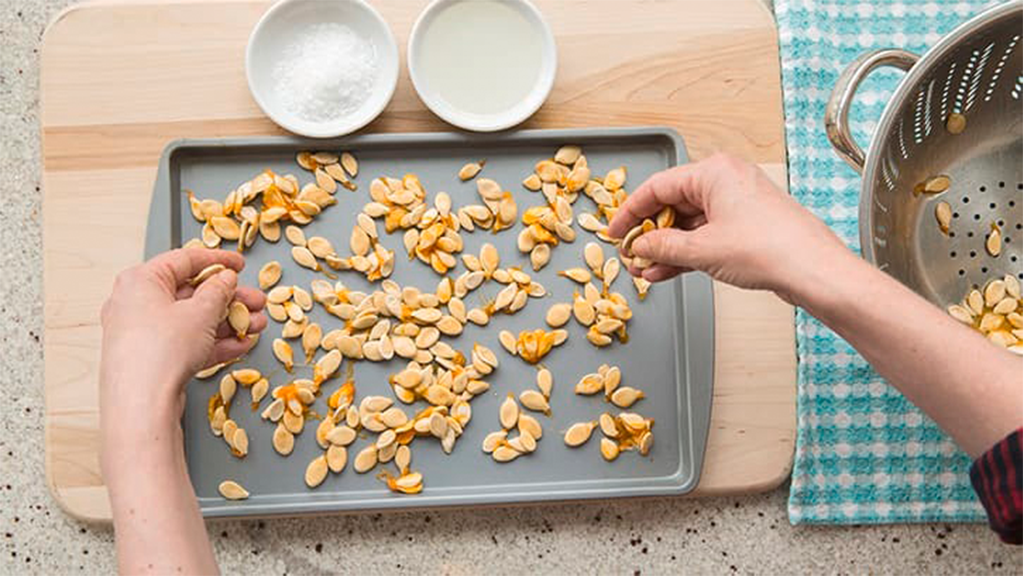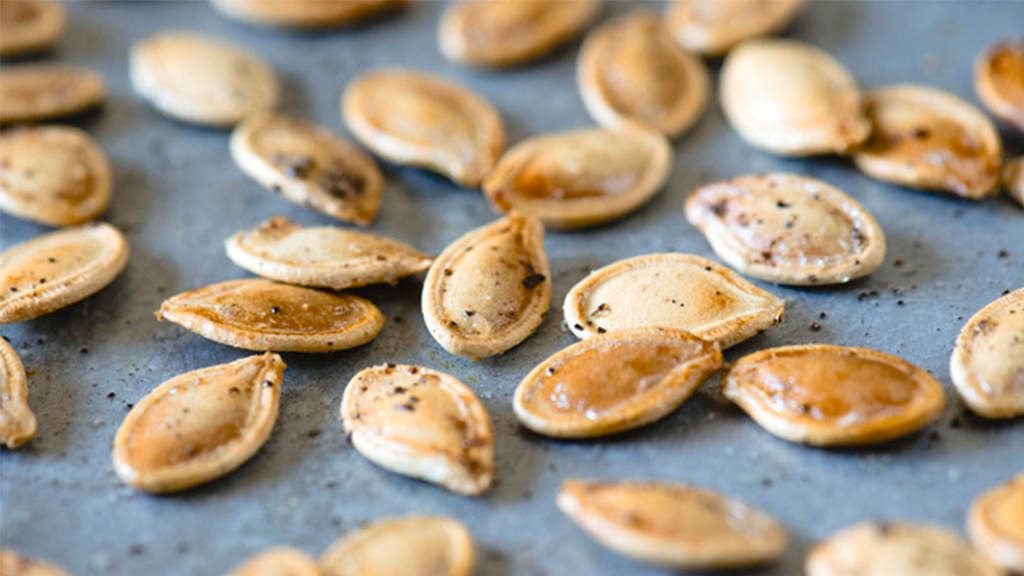
Fall is in the air. And, whether you like it or not, pumpkin is about to take over your social feed in every way, shape, and form. While we are definitely on “team pumpkin,” we want to introduce you to a new staple that should certainly be considered on a keto*-friendly diet—pumpkin seeds.
Yes, we want you to keep those pumpkin seeds when you’re carving your Jack-O-Lanterns because those little gems pack a small but mighty nutrient punch. Plus, they’re extremely versatile in your keto*-friendly kitchen. Whether you roast them for a mid-afternoon snack or use them to add texture (and nutrition) to your fall salads and morning parfaits, they are certainly a welcome addition to your pantry staples.
Need more convincing? We got you. Read on to find out everything you need (and want to know) about pumpkin seeds.
WHAT ARE THE BENEFITS OF PUMPKIN SEEDS?

Pumpkin seeds contain both macro and micronutrients that helps your body thrive. However, the nutrients you receive from eating pumpkin seeds differ based on how you’re consuming them. For instance, pumpkin seeds can be eaten with either their shell on or shell off (unshelled), and roasted or unroasted. Given most varieties on the market and what you’d prepare at home are roasted or baked, let’s take a look at the nutritional differences in roasted shelled versus unshelled first.
PUMPKIN SEED NUTRITION
Roasted Pumpkin Seeds with Shell-On, Unsalted
Serving Size: 1-ounce (28.35 g)
Calories: 130 kcals
Total Fat: 5.5 g
Saturated Fat: 1 g
Cholesterol: 0 g
Carbohydrates: 15 g
Dietary Fiber: 5 g
Sugar: 0 g
Protein: 5 g
Iron: 0.9 mg
Calcium: 15.6 mg
Magnesium: 73 mg
Potassium: 261 mg
Zinc: 2.9 mg
Roasted Pumpkin Seeds, Unshelled, Unsalted
Serving Size: 1-ounce (28.35 g)
Calories: 160 kcals
Total Fat: 14 g
Saturated Fat: 2.4 g
Cholesterol: 0 g
Carbohydrates: 4 g (Net Carbs:
Dietary Fiber: 2 g
Sugar: 0 g
Protein: 8 g
Calcium: 14.7 mg
Iron: 2.3 mg
Magnesium: 156 mg
Potassium: 223 mg
Zinc: 2.2 mg
As you can see, roasted shelled and unshelled pumpkin seeds have pretty impressive nutrient profiles. But, consuming the same portion (1-ounce, or roughly ¼ cup) of shelled versus unshelled differs when it comes to specific nutrients, like dietary fat, fiber, and magnesium. These nutrients become even more important to consider when following a keto*-friendly diet.
For example, consuming the shell provides less fat and magnesium yet 3 grams more of dietary fiber than its unshelled counterpart. While it’s likely when you’re following a keto*-friendly diet you’re going to make up for the lower fat content in your other keto*-friendly choices throughout the day, dietary fiber and magnesium may be harder to meet your necessary needs on a keto*-friendly diet, given its predominately focused on higher fat and protein foods that plant-based foods.
Dietary fiber is important to keep your gastrointestinal (GI) system regular, however it’s often found in foods that are higher in carbs than acceptable for a typical keto*-friendly diet. For that reason alone, it may be worthwhile considering adding shelled pumpkin seeds into your diet on days you have the flexibility for their additional carbs. Now, you will still get these nutrients consuming the unshelled pumpkin seed option, just not in the same quantities.
Regardless if you choose to eat shelled or unshelled pumpkin seeds, their benefits are still quite impressive. For instance, not only do both options contain nutrients that most Americans aren’t getting enough of, like dietary fiber and potassium., These nutrients also contain the electrolytes calcium, potassium, and magnesium that play an important role in fluid balance throughout your body.
Perhaps most importantly , since pumpkin seeds are a plant-based foods, they also contain phytonutrients, which are substances found in plants that have shown to play a role in human health and may even help prevent some diseases thanks to their antioxidant function.
DOES ROASTING PUMPKIN SEEDS AFFECT THE NUTRITIONAL VALUE?

The simple answer is yes, roasting affects the nutritional value of pumpkin seeds. But, in a good way (thanks to those phytonutrients.) Research shows that roasting pumpkin seeds at high temperatures actually enhances their antioxidant capacity. While it’s certainly okay to eat pumpkin seeds raw (and they will still provide some antioxidants in addition to macro and micronutrients), oftentimes, most people prefer the roasted flavor.
Roasting pumpkin seeds at a temperature of 160°F for 10 minutes has been found to be the ideal “formula” to reap the increased antioxidant effects while keeping the protein quality intact. So, be ahead of the trend and turn on that oven and take some time to meal prep your own roasted pumpkin seeds.
KETO*-FRIENDLY INSPIRATION USING PUMPKIN SEEDS

Get inspired this fall and consider sprinkling pumpkin seeds (both shelled and unshelled) into your meal plan. Here’s some of our favorite ideas to get you started:
- Make a PSL-inspired morning smoothie and blend 2 tablespoons of unshelled pumpkin seeds with the new :ratio Keto*-Friendly Dairy Drink and a sprinkle of pumpkin spice.
- Sprinkle whole pumpkin seeds (shell included) into a keto*-friendly trail mix made with your favorite roasted nuts. Make them a treat by roasting the nuts and pumpkin seeds together, using a little keto*-friendly maple syrup to sweeten them up.
- Roast your favorite fall veggies (like cauliflower, squash, and Brussel sprouts) and toss them together in a salad bowl. Top with a fresh vinaigrette and sprinkle with unshelled pumpkin seeds alongside :ratio’s Keto*-Friendly Toasted Almond Granola for a subtle crunch.
THE BOTTOM LINE
Pumpkin seeds are a nutrient-dense, keto*-friendly option to include in your regular routine. To reap their full benefits, consider roasting them and enjoying them with the shell on. Toss them into your :ratio Cultured Dairy Snack for added crunch or sprinkle them on top of your salads for a crouton with a better-for-you bite. We promise, the possibilities are endless when you use what’s “inside” the pumpkin!
Did you enjoy this? Then checkout our Ask A Dietitian post all about eggs, and submit your questions you’d like us to cover by tagging us in your query on Facebook or DM us on Instagram. We can’t wait to hear from you.
†2G Net Carbs = 2G Total Carbs - 0G Fiber - 0G Sugar Alcohol
*Always consult your physician before starting an eating plan that involves regular consumption of high fat foods. See information for calorie, total fat and sat. fat content.






